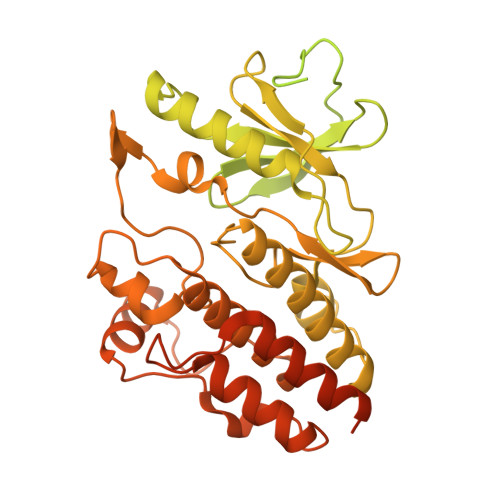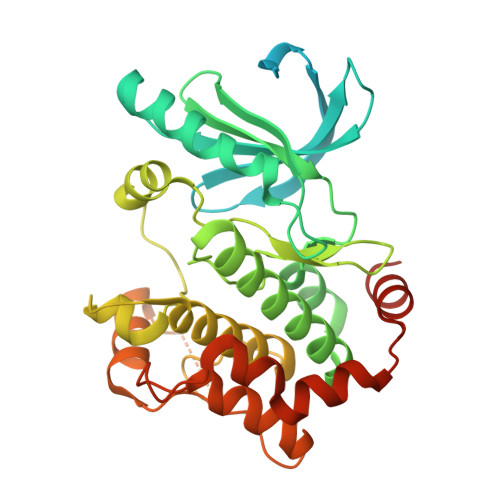Cryo-EM structures of CRAF/MEK1/14-3-3 complexes in autoinhibited and open-monomer states reveal features of RAF regulation.
Jang, D.M., Boxer, K., Ha, B.H., Tkacik, E., Levitz, T., Rawson, S., Metivier, R.J., Schmoker, A., Jeon, H., Eck, M.J.(2025) Nat Commun 16: 8150-8150
- PubMed: 40890113
- DOI: https://doi.org/10.1038/s41467-025-63227-2
- Primary Citation of Related Structures:
9MMP, 9MMQ, 9MMR, 9MMS - PubMed Abstract:
CRAF (RAF1) is one of three RAF-family kinases that initiate MAP kinase signaling in response to activated RAS and is essential for oncogenic signaling from mutant KRAS. Like BRAF, CRAF is regulated by 14-3-3 engagement and by intramolecular autoinhibitory interactions of its N-terminal regulatory region. Unlike BRAF, it is thought to require tyrosine phosphorylation in its N-terminal acidic (NtA) motif for full catalytic activation. Here we describe cryo-EM reconstructions of full-length CRAF in complex with MEK1 and a 14-3-3 dimer. These structures reveal a fully autoinhibited conformation analogous to that observed for BRAF and two "open monomer" states in which the inhibitory interactions of the CRD and 14-3-3 dimer are released or rearranged, but the kinase domain remains inactive. Structure-function studies of the NtA motif indicate that phosphorylation or acidic mutations in this segment increase catalytic activity by destabilizing the inactive conformation of the kinase domain. Collectively, these studies provide a structural foundation for understanding the shared and unique regulatory features of CRAF and will inform efforts to selectively block CRAF signaling in cancer.
- Department of Cancer Biology, Dana-Farber Cancer Institute, Boston, MA, 02215, USA.
Organizational Affiliation:




















